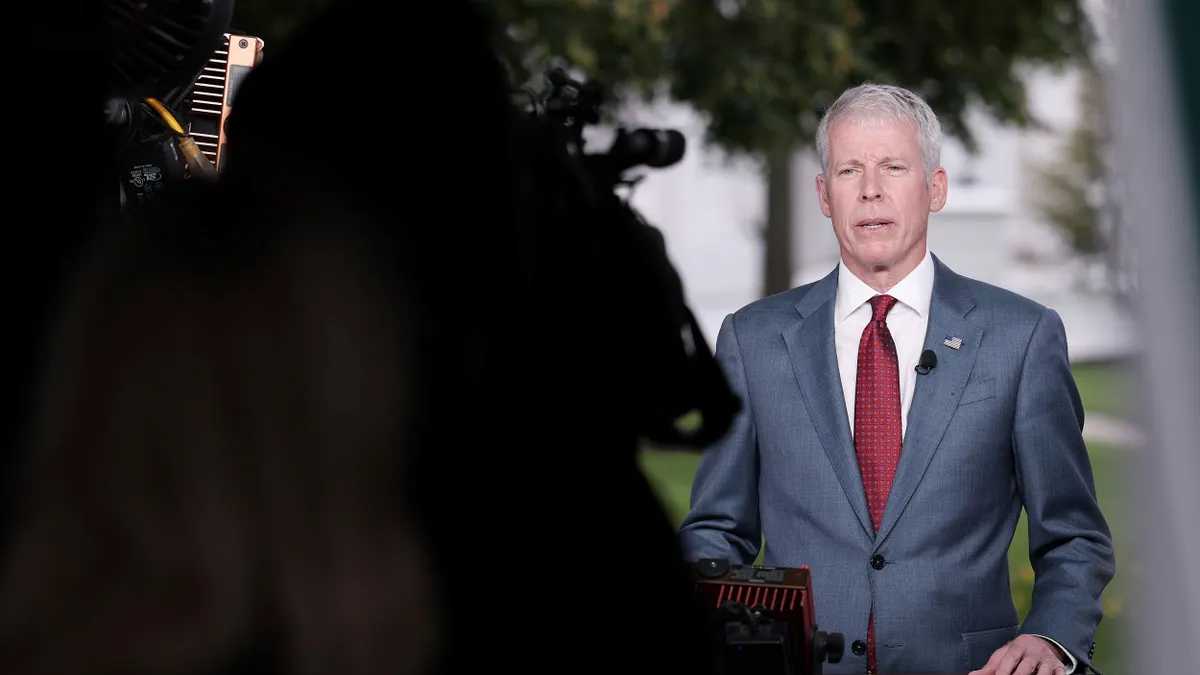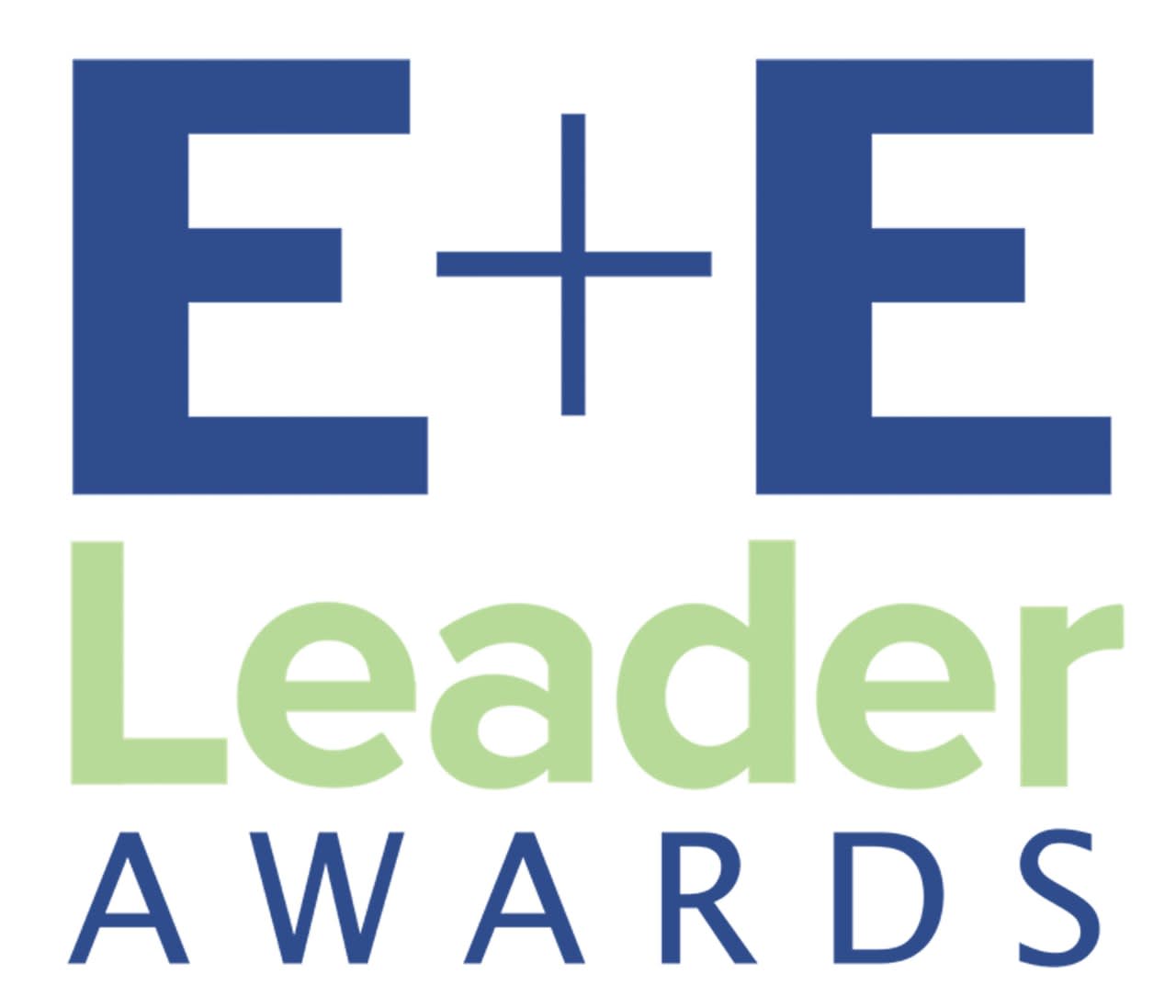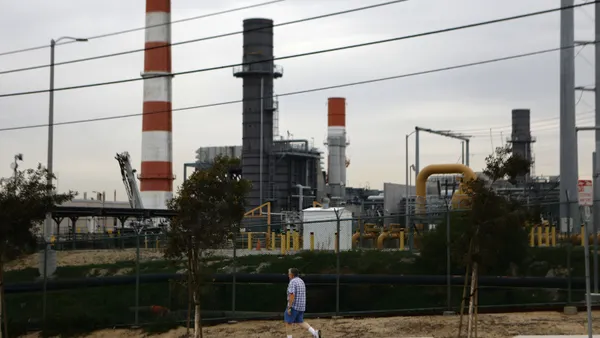Dive Brief:
- The COVID-19 pandemic has served as a "test case demonstration" for grid reliability with a higher use of renewables in recent months, according to Deloitte Consulting.
- Through mid-June, renewable energy overtook coal generation in the mix for 116 days, compared to 39 days in 2019. A Deloitte Resources 2020 study, discussed on Wednesday at a panel on the pandemic impacts of energy management, anticipates a growing level of wind and solar penetration, despite the pandemic and ensuing economic conditions.
- Deloitte consultants are tracking how utilities emerge from pandemic conditions as the commercial and industrial (C&I) sector starts in spurts and energy providers seek cost recovery after suspending shutoff service to customers.
Dive Insight:
Businesses and residential customers continue to demand clean energy options, according to Marlene Motyka, U.S. and global renewable energy leader at Deloitte Transactions and Business Analytics.
Through mid-June this year, wind and solar energy made up 12% of the total U.S. generation average, up from 10% in 2019, while distributed energy resources and storage is one of the "primary areas" for building new capacity over the midterm, Jim Thomson, vice chairman and U.S. power, utilities and renewables leader at Deloitte Consulting, said during the webinar.
"During this time of depressed energy and electricity demand, we're actually seeing renewables play a larger percentage of what is in the mix for fuels," he said. "It's absolutely proved out that long-term viability is absolutely not as big a concern as many feared it was."
However, concerns remain about changes in energy load.
"What will happen if we continue to see further decreases in power demand? Could that impact the future capacity additions of renewables and natural gas?" Motyka said. "I think it's hard to say because there are a lot of factors that impact that equation."
However, she added, businesses and residential consumers are focused on renewable energy.
According to Deloitte's survey, 65% of residential respondents saw increasing renewable energy development as boosting the national economy.
Heading into summer months, the load shift from C&I to the residential sector has not been a concern, Thomson added. "So far to date, I don't think there's a fear that the shift to people working from home is going to cause massive loads on the grid that will itself lead to additional potential blips or outages," Thomson said.
"What we see being implemented by utilities will vary upon where they're located. Some on the East Coast of the U.S. have more opportunity around offshore wind. But again, I think it's kind of all of the above ... wind, solar and battery storage is definitely going to be a key," Motyka said.
The change in customer energy use is "not a resiliency issue" but a matter of cost management, according to Thomson. Utilities feel a lot of pressure to maintain low costs because "commissions expect them to do it, customers are asking for that," he said. And rates have indeed come down over the last four months because of fuel costs.
Deloitte is watching utilities react as they transition customers from a period of service shut-off suspensions.
"A lot of utilities are already proactively reaching out to customers, working with them to put in payment plans for the long term to ease the burden. When that debt does become potentially due at the end of this, [utilities are] working with regulators to figure out to what degree they'll be able to recover all or portions of that debt if it does go uncollected long term," Thomson said.
Prioritizing decarbonization post-pandemic
"The pandemic has not negatively impacted the long-term energy transition to renewables and I think this is what businesses and residential consumers are demanding," Motyka said, per Deloitte's 2020 Resources survey.
Increasingly, utilities and businesses have announced decarbonization goals, some making major announcements in the midst of the pandemic. Deloitte analysts expect more announcements and more ambitious updates on existing clean energy targets in the energy sector. Year-over-year decarbonization goals could also be accelerated, they said.
However, Edison Electric Institute (EEI) has not seen any changes in plans and analysis on the integration of higher levels of renewables from its investor-owned utility members.
"EEI’s member companies are committed to getting the energy they provide as clean as they can as fast as they can, while keeping electricity reliable and affordable for customers. EEI’s members collectively are on a path to reduce their carbon emissions at least 80 percent below 2005 levels by 2050," according to the organization.
"So the message there is that even at the time when we think it would have been easy to push pause on things like the advancing of carbon neutrality, that is absolutely not the case and it's exciting in our industry to see that continue," Thomson said.














